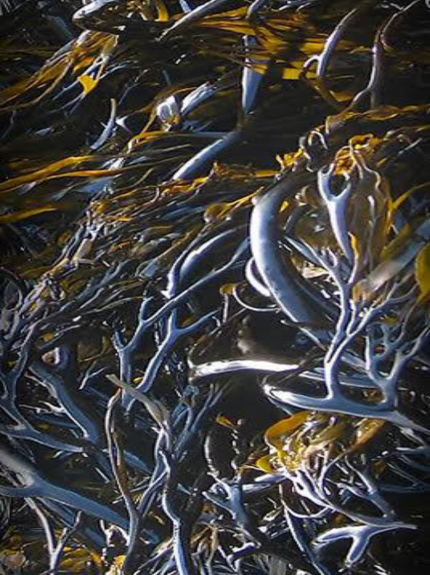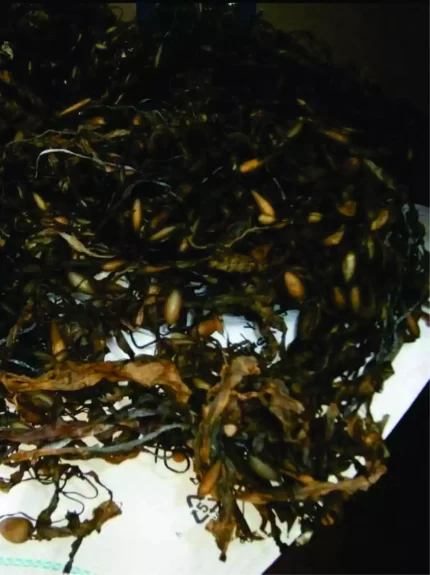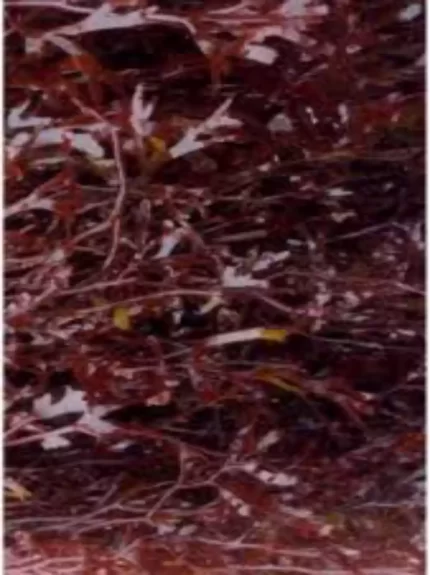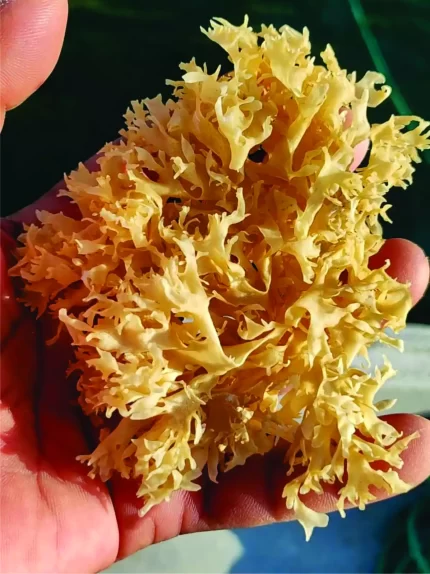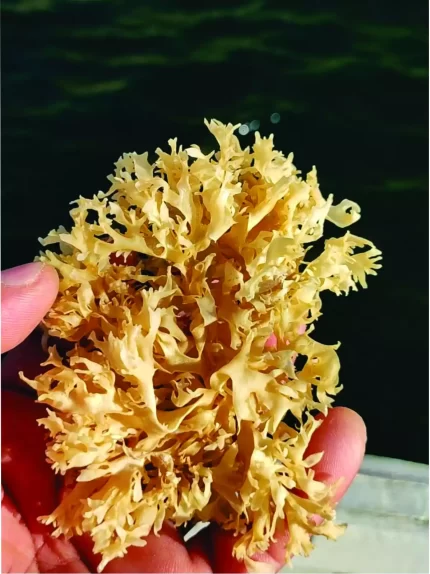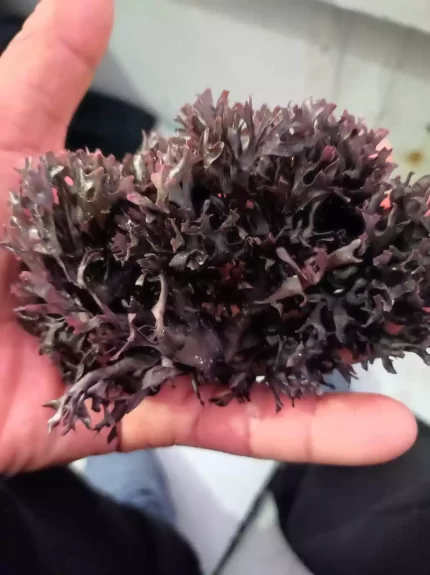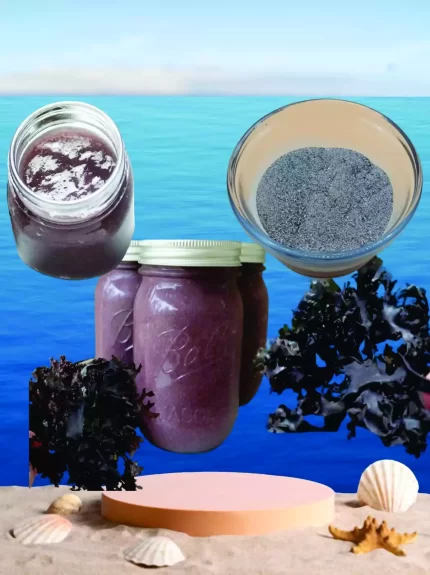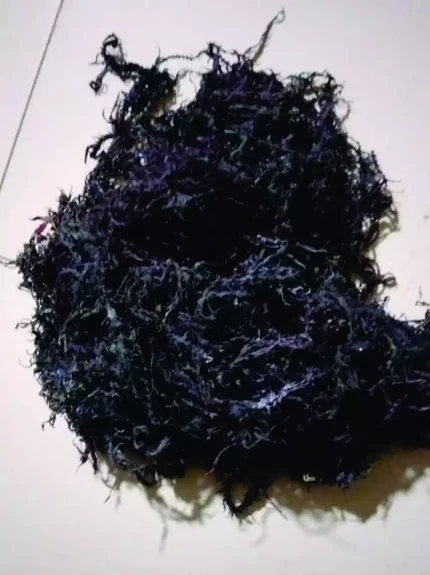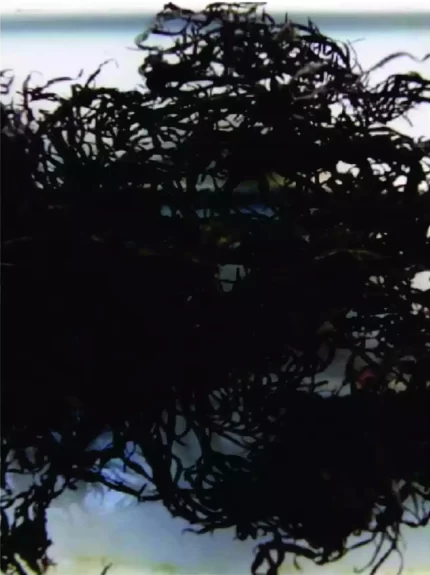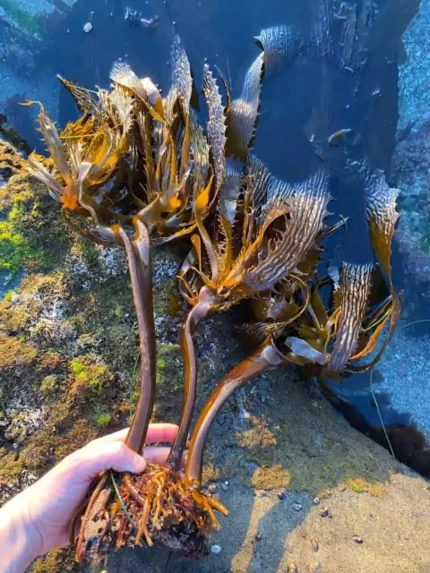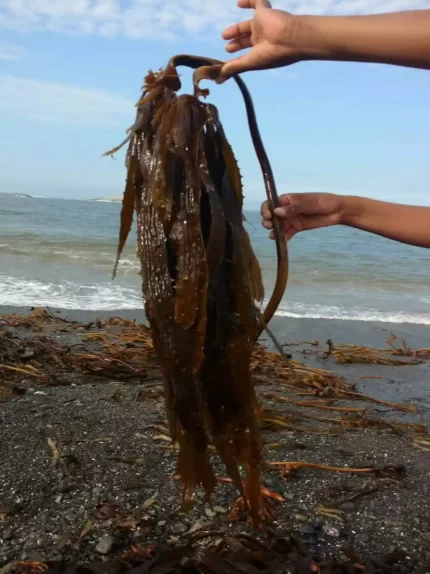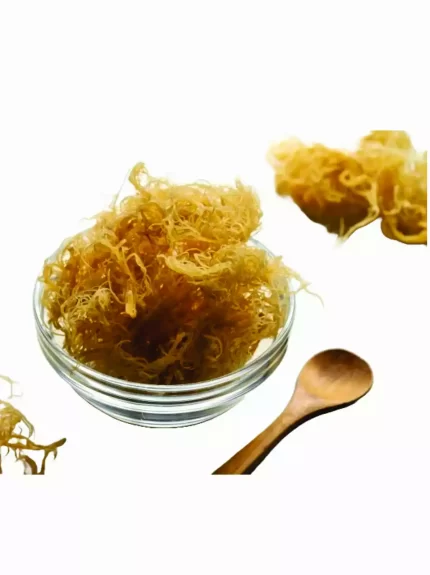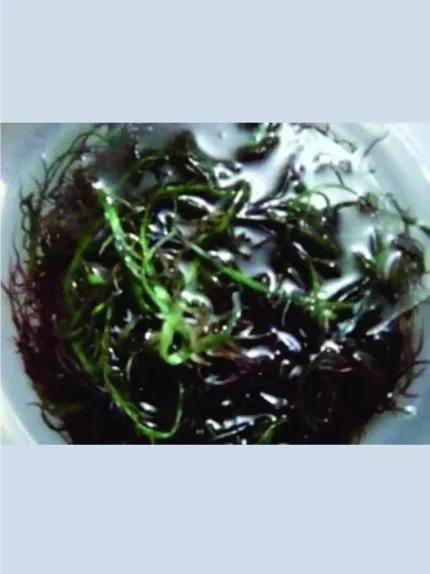Description
Distribution and Biology: It is an endemic species of the Eastern Pacific coasts in the Southern Hemisphere, with a range of distribution between 14° and 40° latitude. It inhabits rocky, exposed and semi-exposed subtidal environments. It forms discrete forests, in depths between 4 and 25 meters. Its bathymetric extension is variable, and depends on the pressure exerted by predators, on the exposure of the waves at the upper limit; the availability of stable substrate and the slope of the rocky bottom at the lower limit. This species, like M. pyrifera, is considered a key species of benthic ecosystems, where it plays an engineering and structuring role (JONES et al. 1994, 1997), which allows the coexistence of a large number of invertebrates, fish and plants. Its morphological structure includes a fixing disc, from which arise from one to five stipes, each of which branch dichotomously and have at least two blades. These are flat, broad, smooth, and lanceolate in shape with smooth and sometimes toothed margins. Adult plants can reach more than 2 meters.
Applications: The extraction of this species is an eminently artisan work, of singular importance for the rural areas involved in the extractive activity, generating work and socioeconomic well-being for a large number of families. It is mainly used in the extraction of alginates. Sodium Alginate is a polysaccharide from brown algae. Although it can be used as a thickener, its most striking role in modern cooking is to allow us to “spherify”. The alginate dissolved in a liquid mixture enters into a rapid reaction with another calcium-rich liquid (such as calcium chloride or gluconolactate), solidifying very quickly, creating a very stable and resistant structure. To give an example, let’s imagine that we have made a fruit syrup in which we have dissolved alginate. If we take a tablespoon of the syrup and gently introduce it into a mixture of water with calcium salts, in a few seconds the contact area between the syrup and the water solidifies creating a sphere. The edges of this sphere will have a jelly bean-like texture and its interior will remain liquid. The experience of the diner when introducing one of these spheres in the mouth is that of an “explosion” of flavor since with the pressure of the tongue, the sphere explodes, releasing the liquid, in this case the fruit syrup, in the mouth. Spherification can be done with sweet or savory products.
And depending on where we use the alginate, we will talk about: Direct spherification, when the alginate is mixed with the product that we are going to ingest (as in the example of fruit syrup). Reverse spherification, when the alginate is added to the aqueous solution in which the product to be spherified is subsequently immersed. The sodium alginate must be added well sprinkled to avoid the formation of lumps. It should then be mixed very vigorously, preferably using an electric hand mixer. Once added to the food (direct spherification) or to the bath (reverse spherification), it is important to let the mixture rest for at least 1 hour in the cold before starting to make the spheres. A dose of about 4 grams of alginate per liter is usually used. It is important to take into account that spherification does not occur correctly in very acidic mixtures, with pHs lower than 3.8. In those cases, the pH must be raised using products such as Sodium Citrate. Visit our Spherification Recipes section to see what types of dishes can be made. Sodium alginate, as we said at the beginning, can also be used as a thickener. It is common to find it in ice creams where it improves the texture and also acts as a stabilizer. The alginate is presented as a powder and can be stored without problems for very long periods of time.









